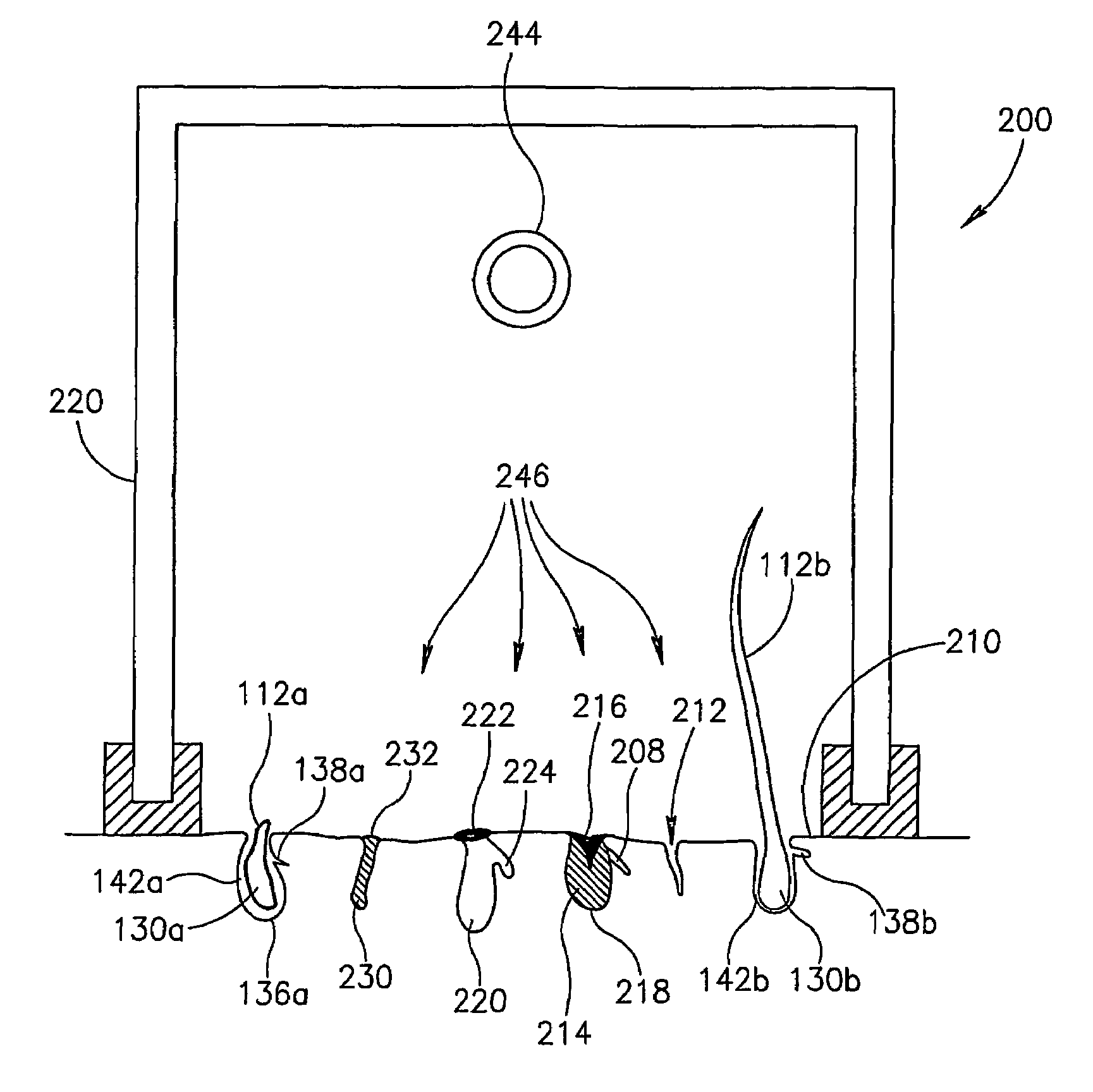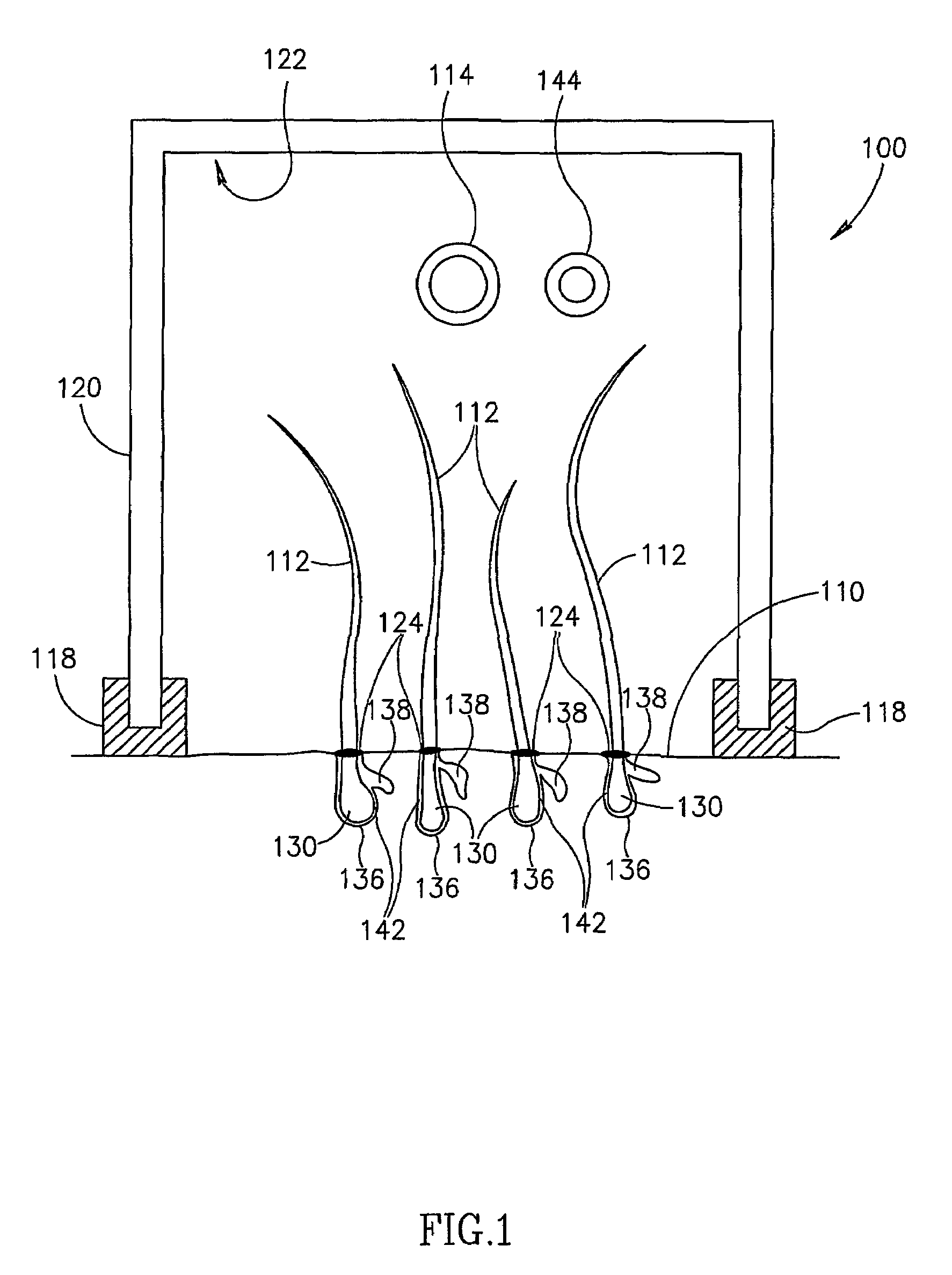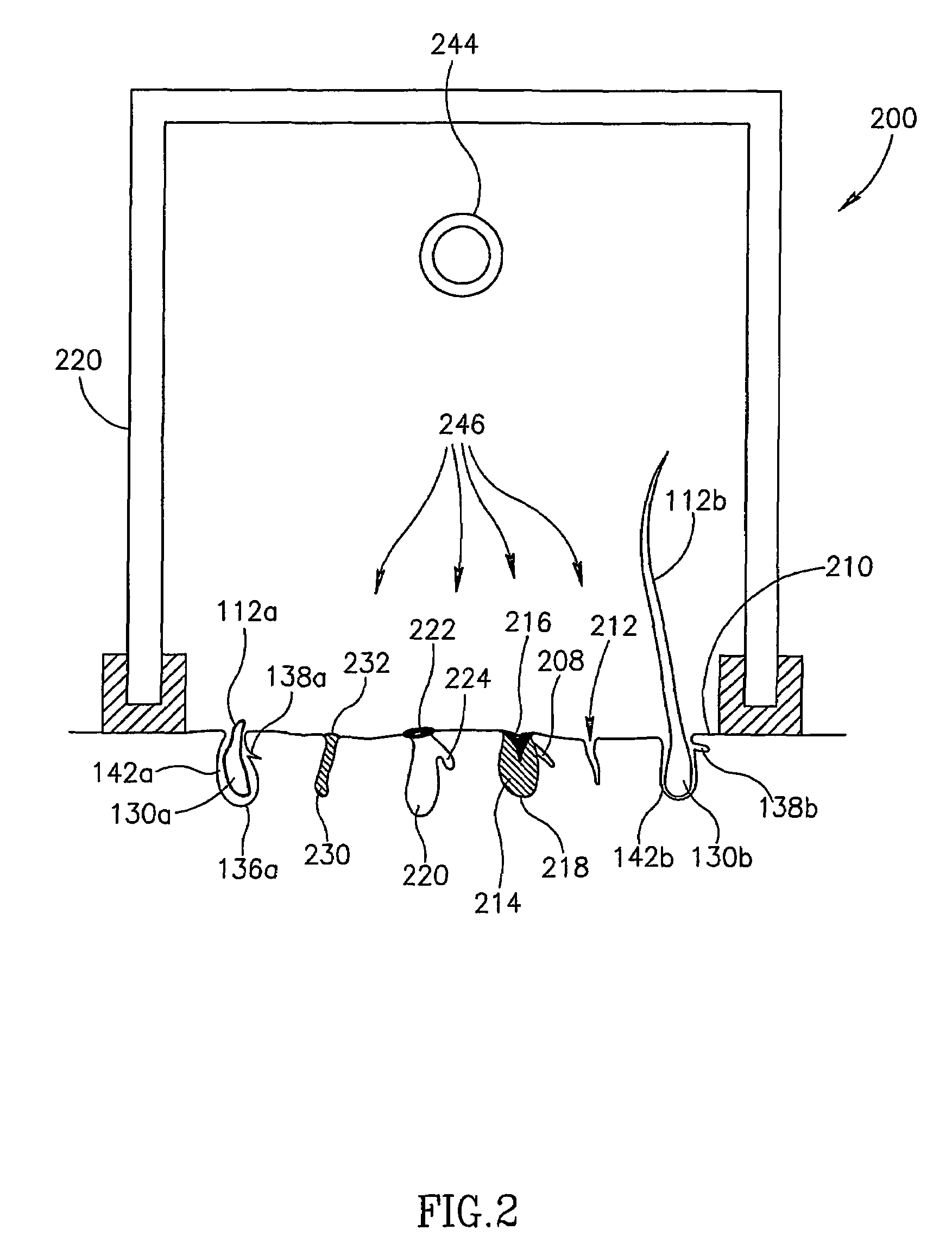Acne treatment
a technology for acne and heat therapy, applied in the field of acne treatment, can solve the problems of scarring, scarring, and scarring of severe abscesses or cysts, and achieve the effects of less rapid penetration into the skin, less heat intensity and/or duration, and less scarring
- Summary
- Abstract
- Description
- Claims
- Application Information
AI Technical Summary
Benefits of technology
Problems solved by technology
Method used
Image
Examples
Embodiment Construction
[0101]FIG. 1 is a schematic diagram of an embodiment of an exemplary heating device 100 of the present invention for treating acne. Heating device 100 applies heat to an area of skin 110 and hairs 112, raising their temperature and causing the amelioration or resolution of acne symptoms.
[0102]In an exemplary embodiment, heating device 100 has a radiant heat source 114 that provides pulsed radiant heat energy that is absorbed by hairs 112 and skin 110. Optionally, heating device 100 has a housing 120 that has a mirrored surface 122 designed to increase the heat efficiency of pulsed radiant heat source 114. Additionally or alternatively, housing 120 has a gasket 118 that serves to seal housing 120 against the skin so relatively small amounts of heat escape. Optionally, heating device 100 also includes a second monochromatic radiant heat source 144 that is turned on when the skin reaches a pre-determined temperature, for example, 60° C., to selectively heat the hair.
[0103]In an exempla...
PUM
 Login to View More
Login to View More Abstract
Description
Claims
Application Information
 Login to View More
Login to View More - R&D
- Intellectual Property
- Life Sciences
- Materials
- Tech Scout
- Unparalleled Data Quality
- Higher Quality Content
- 60% Fewer Hallucinations
Browse by: Latest US Patents, China's latest patents, Technical Efficacy Thesaurus, Application Domain, Technology Topic, Popular Technical Reports.
© 2025 PatSnap. All rights reserved.Legal|Privacy policy|Modern Slavery Act Transparency Statement|Sitemap|About US| Contact US: help@patsnap.com



